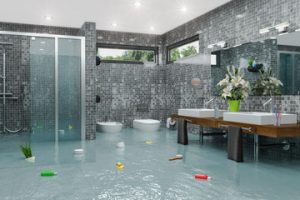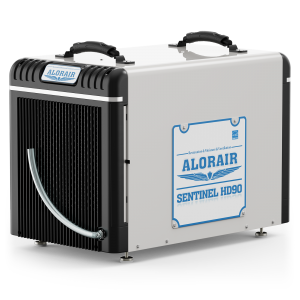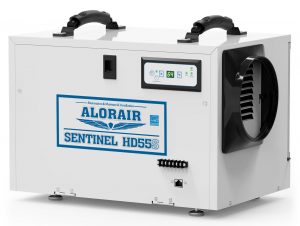The rising demand for dehumidifiers is incomparable to any household or industrial appliance. Those who have used it, even for a single day, can attest to the fact that it causes a remarkable improvement in indoor air quality. If you have never had the pleasure, get one even for a trial run, and you are guaranteed to have a pleasant surprise. However, before rushing to a store only to realize that you have ordered the wrong product, proceed reading the article to learn a few considerations that you have to make before settling on a dehumidifier that will suit your needs.
Type of Dehumidifier
There are two primary working mechanisms of dehumidifiers. It can either be a refrigerant (compressor) or a desiccant dehumidifier. Unknown even to many sellers, what guides you in selecting the appropriate type is the atmospheric temperature. Refrigerant dehumidifiers are useful in areas with higher temperatures, while the latter works well especially in low temperatures.
Room Space/Floor Space Where It Is To Be Installed
As a rule of thumb, the larger the room or floor space, the higher the capacity of the dehumidifier needed to remove moisture effectively. However, another important parameter that must be put into consideration is the average relative humidity in the room. You may find that the room may be large, though the moisture is relatively low and vice versa.
Dehumidifier capacity is measured in terms of PPD (Pints per day). For instance, if it is capacity is written as 200PPD, it means that the dehumidifier can extract 200 pints of moisture within a 24-hour duration. For a medium-sized room, a 50-70PPD dehumidifier should be sufficient. However, to be safe, it is essential to consult with experts in the field since they can give you a more precise estimate based on your needs. Alorair has produced many dehumidifiers with different capacities so that customers can choose the most suitable one. View the list of Alorair dehumidifiers here.
Indoor Temperature and Humidity Level

Temperature and humidity are the primary environmental conditions that can affect the normal operation of a dehumidifier. For areas that have low temperatures, getting a refrigerant with a larger capacity may be useful. However, if you reside in a high-temperature region, a lower capacity device will be sufficient.
Similarly, common sense dictates that in areas with high humidity levels, acquiring a device with high capacity may be effective to avoid lags during operation and eliminate the need to continually drain the storage tank (for the case of a refrigerant dehumidifier).
Water Removal
While the dehumidifiers are in operation, they gradually absorb water from the atmosphere. The big question is where would you like this water to be channeled? In some dehumidifiers, the water accumulates in storage containers, and once they are full, they have to be emptied manually. On the other hand, other dehumidifiers are fitted with a hose. When in operation, you can direct the hose to an external drain.
Another way to drain, though not so common, is achieving continuous drainage using an external pump that can periodically drain water from the drainage tank.
The design to Have Special Features

Different manufacturers usually have different packages that set them apart from their competitors. As a result, there are special modifications associated with specific brands that make them more user-friendly. Some features to take note of include:
Controls
The ease and ability to modify the unit’s operation entirely depends on the layout of the controls. It is easy to operate dehumidifiers with a digital display since all the parameters are visible on the screen. Apart from that, there will be additional options that can be used to customize the device to ensure it operates at maximum efficiency.
Auto-Restart Function
Many recent models have an auto-restart function. While it has nothing to do with the amount of moisture that can be removed in a specific duration, having it surely makes work easier. That is because you will not have to set a reminder to switch the device on or off depending on the prevailing humidity levels.
Timer
The self-timing option in the dehumidifier has similar benefits to those mentioned above. Once the timer is set, the device will work round the clock toggling between on and off function based on the timeliness you have set.
Final Thought
You need to have a specific room in mind where you would like the dehumidifier to be placed, be it in the sitting room, kitchen, and basement or even if it is going to be used in construction projects. If you are specifically going to use it in your basement, you should consider acquiring a crawlspace and basement dehumidifier.

Alorair has specialized in producing these types of dehumidifiers which have always received a positive review from users. You can select between Sentinel HDi90 Dehumidifier for Basement or Sentinel HD55S (White) Dehumidifier for Basement. They are mid-sized and portable, but their extraction rate is impressive.










.jpg)
.jpg)

.jpg)
.jpg)
.HDi90.png)
.HD90.png)









.jpg)
.jpg)
.jpg)





.jpg)
.jpg)


.jpg)








.jpg)
.jpg)








.jpg)
.jpg)























.jpg)
.jpg)
.jpg)





.jpg)
.jpg)
















-.jpg)
.jpg)

.jpg)
.jpg)



























 Exclusive offers
promotions
Exclusive offers
promotions

